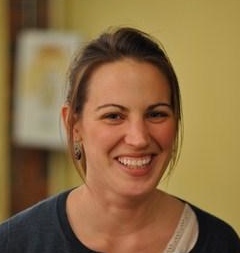We've all heard this from someone we know: "I'm so bad at math, I just don't get it." We sympathize or agree, despite the fact that numbers and reasoning are integrated into so many aspects of our lives, from comparing interest rates and estimating loan payments to staying fit. The accepted stigma around math remains.
Distaste for math usually begins early on, where an experience in school leads a child to feel disengaged or incapable of understanding an elusive mathematical concept. As a teacher, I believe that children do not have to experience math as daunting and unwieldy, and that a portion of the population is not predetermined to use a calculator to figure out real-life problems. However, in order for teachers to change children's trajectory, they need to be trained to deeply understand what they are teaching and have numerous strategies to help children master the content.
I attended a year-long teacher preparation program that involved spending a school year in a mentor's classroom while earning my master's degree in elementary and special education. Once I was on my own, I quickly realized that I was not sufficiently trained to teach math to my fifth graders. This is not because I wasn't taught anything about teaching math, but because the curriculum was too broad.
To become a certified elementary teacher, you must be trained to teach all subjects. I know you're thinking, Hey, elementary subjects can't be that hard to cover, right? But elementary training and certification, at least in Massachusetts, are for grades one through six. In my program there was not enough time to learn the material across all grades and all subjects with the specificity required to master teaching such content to children. As a result, we learned broad ideas without the tools to teach them in multiple ways. Which brings me back to math: When teachers have not mastered multiple ways of understanding a concept, they are not equipped to teach in a way that will meet the needs and learning styles of all learners. The result is that some kids will "get" what's being taught, while others will feel disheartened and eventually disengage.
I believe that training and certification for elementary teachers should be split into two subgroups for lower and upper elementary grades. Students' developmental stages are very different; differentiating between lower and upper elementary training would provide teachers with more time to master the content and the teaching strategies specific to the age range they will be teaching. Thus the bulk of explicit practice time and training should be spent on direct, age-appropriate content strategies that can be used with students.
Teachers in training would also greatly benefit from opportunities to observe a range of teachers and types of classrooms during their training. During my year of training, I was based in my mentor's classroom, but rarely was afforded the time or opportunity to observe anyone else teach. Great teaching and learning requires acknowledging that our brains are unique and may require different strategies and explanations in order to fully understand and master new ideas. Teachers need to be equipped and supported in developing such skills before being on their own in a classroom.
Learning the art of teaching - and teaching well - involves observing, reflecting, and questioning over time to develop a depth of skills and strategies to meet the needs of all learners. When teachers and students begin to approach learning math with the philosophy that there are multiple pathways to finding answers to questions, children are encouraged to move beyond the fear of "I can't do this." There is no longer a reason to disengage if one strategy doesn't work; multi-digit multiplication becomes a puzzle that can be explored using a variety of tools and models, instead of being a set of steps a child must memorize.
As a teacher I am still learning new mathematical strategies and methods for teaching them. While I'm not expecting teacher preparation programs to expose prospective teachers to every single strategy across every subject, I urge educators to acknowledge that our current system is limited by providing only a broad overview without enough practical application, explicit instruction on grade level content, or opportunities to observe and try of a variety of teaching approaches. I am hopeful that by adjusting our approach to teacher training, where teachers are empowered and explicitly trained to facilitate students' logical reasoning and use of multiple strategies, a greater number of children will be able to say, "I can do math!"
Audrey Jackson is a 5th grade inclusion teacher at Joseph P. Manning Elementary School in the Boston Public School District (BPS) and a Teach Plus Teaching Policy Fellowship alum.
